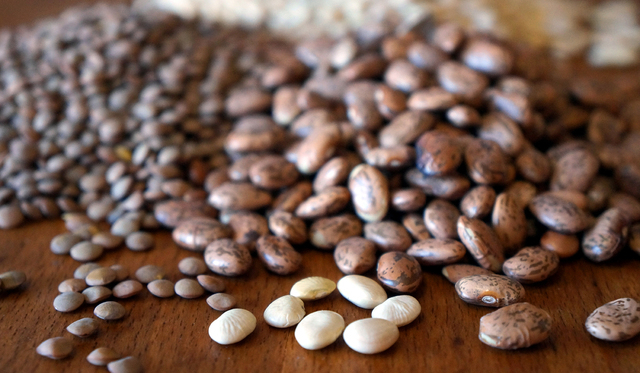Dried beans are power packed for pennies
What would you say if I told you there was a frugal and fabulous food that was filled with protein, fiber, packed with B-vitamins, iron, calcium and potassium, low calorie and naturally fat free that averages 15 cents per serving?
If you said I was full o’ beans… you’d be right!
Beans are the rock stars of the frugal foodie world because they’re incredibly versatile. You can use them in casseroles, to stretch meat in recipes, as a side dish, in salads, soups and stews or puree them to make dips.
Did you ever notice that most bean recipes bring together beans with a bit of protein, like meat, eggs or cheese or with grains? There’s a reason for that. When you combine beans with protein or grains you produce a complete protein equal to that of meat. That’s why there’s a bit of bacon in baked beans, and beans and rice is such a classic.
Canned beans are terrific for convenience but if you want the biggest bang for your buck; you want dried beans.
This is where I imagine you rolling your eyes and whining “but it’s such a hassle.” To which I counter, “Yes, beans take time. But out of the 10 hours of soaking and cooking it only requires about 10 active minutes from you.” If you still want your beans ready at a moment’s notice, like canned, simply cook up a big batch and freeze them in meal-sized portions. One (15 oz.) can equals 1 ½ cups cooked beans.
If you’ve never cooked dried beans, it’s crazy easy. You just sort, soak, and simmer. There are instructions on the bags specific to the kind of bean you are working with but here are general instructions.
First, sort through the beans and discard any small rocks, dirt, discolored or shriveled beans. Next, place beans in a big pot and cover with 6 to 8 cups of water per pound of beans and soak for 8 hours or overnight. Soaking beans isn’t a necessary step but it does reduce the cooking time and I think makes for better beans. Some legumes, like lentils and peas, don’t need to be soaked.
Lastly, you drain the soaking water and add fresh. Bring the pot to a boil then reduce the heat to a gentle simmer and cook until the beans are tender. Cooking times will differ depending on the variety of bean but most need less than two hours on the stove.
Some tips – Add one teaspoon salt per pound of beans about halfway through cooking for tender, well-seasoned beans. Don’t add any acid such as tomatoes or vinegar because acid hinders the cooking process. Dried beans triple in size when cooked so one pound of dried beans makes six cups cooked beans.
Frugal food finds contributed by Patti Diamond, author of “Divas On A Dime – Where Frugal, Meets Fabulous!” www.divasonadime.com Join us on Facebook at DivasOnADimeDotCom.

















